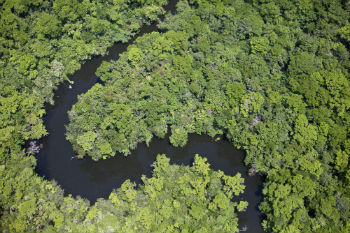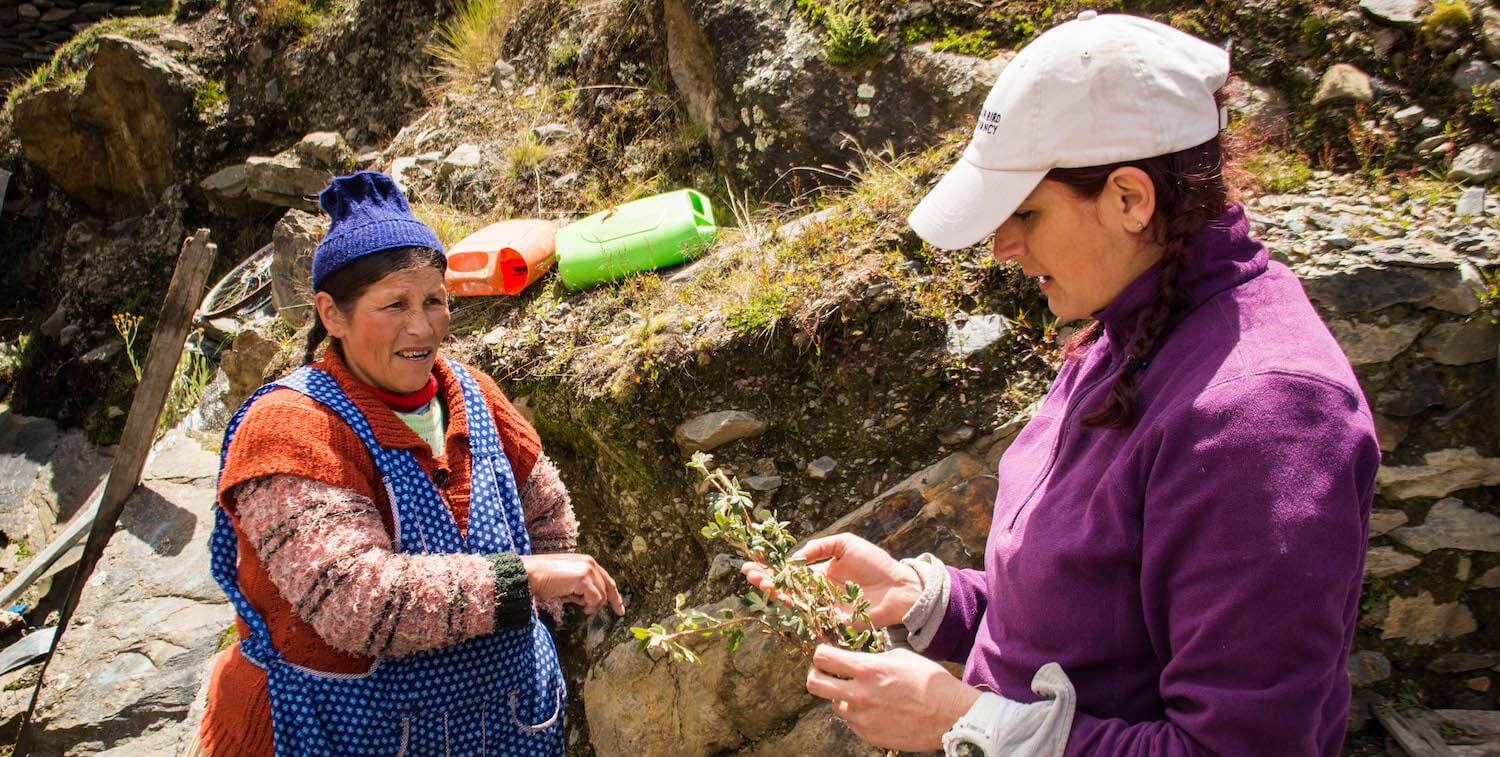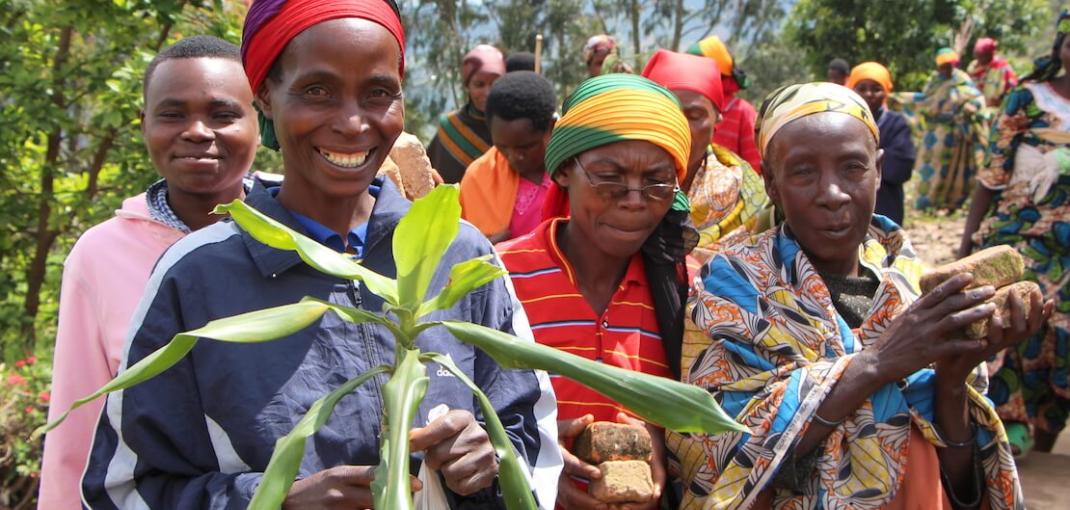What are CEPF's safeguard policies?
CEPF follows safeguard policies, which are guidelines that help us ensure that the projects we fund do not inadvertently cause negative impacts, either to the environment or to local people. We review each project, before and during implementation, to see if there are any potential concerns.
What happens if my project triggers a safeguard?
A member of CEPF's staff or regional implementation team will contact you if your project triggers a safeguard policy.
Triggering a safeguard does not mean that you will not be able to complete your project. In most cases, you will simply need to submit an additional safeguard document, which will help you think through the project's potential consequences, and establish a grievance mechanism. CEPF staff can advise you on any specific requirements needed for compliance. You will be responsible for implementing and monitoring any needed measures.
CEPF's safeguard policies are set out in full in the Environmental and Social Management Framework, available in English (PDF - 888 KB), French (PDF - 975 KB) and Spanish (PDF - 949 KB).
Summaries of our safeguard policies
Environmental and Social Assessment
CEPF projects should not have adverse environmental or social impacts. Potential adverse impacts should be anticipated and mitigation measures should be incorporated into project design. These include actions to avoid, minimize, mitigate and/or offset environmental and social impacts, monitor compliance with the relevant safeguard policies, and strengthen institutional capacity to implement these measures.
Safeguard template
- English (Word - 23 KB)
- French (Word - 28 KB)
- Portuguese (Word - 56 KB)
- Spanish (Word - 30 KB)
Examples of the completed safeguard document
- Albaforest (English, PDF - 1.1 MB)
- United Purpose (English, PDF - 337 KB)
- The Urban Research Institute (English, PDF - 1 MB)
- Notre Grand Bleu (French, PDF - 7 MB)
- AHMEPN (French, PDF - 1.4 MB)
- Missouri Botanical Garden (French, PDF - 1.6 MB)
- COPABASE (Portuguese, PDF - 321 KB)
Restrictions on Land Use and Involuntary Resettlement
CEPF projects must not involve the physical resettlement of people (whether voluntary or involuntary) or the purchase of land. Where project activities may result in restrictions on access to natural resources (whether inside or outside protected areas), the project design must incorporate measures to avoid, minimize, mitigate and offset adverse cultural and socio-economic impacts, including by providing compensation, livelihood restoration and/or transitional support to project-affected persons.
Safeguard template
- English (Word - 17 KB)
- French (Word - 17 KB)
- Portuguese (Word - 59 KB)
- Spanish (Word - 18 KB)
Examples of the completed safeguard document
- Wildlife Conservation Society (English, PDF - 793 KB)
- BIODIVERSA (Spanish, PDF - 439 KB)
- Man and Nature (English, PDF - 691 KB)
- Flora & Fauna International (English, PDF - 342 KB)
- AHMEPN (French, PDF - 1.5 MB)
- Fikambanana Bongolava Maitso (French, PDF - 345 KB)
- Asociación Calidris (Spanish, PDF - 1.1 MB)
- FEDENA (Spanish, PDF - 773 KB)
Biodiversity Conservation and Sustainable Management of Living Natural Resources
CEPF projects must not cause adverse impacts on critical habitats, including from the procurement of natural resource commodities, except for adverse impacts on a limited scale that result from conservation actions that achieve a net gain of biodiversity values. Any production or harvesting of living natural resources must adopt an approach consistent with good sustainable management practices, including industry-specific standards, where such standards exist.
Safeguard template
Indigenous Peoples
CEPF projects that affect Indigenous Peoples (whether adversely or positively) need to be prepared with care and with the full and effective participation of affected Indigenous Peoples communities. The Free, Prior and Informed Consent (FPIC) of affected Indigenous communities must be obtained before project activities that affect them begin. When entitled to receive them, Indigenous Peoples must receive culturally appropriate benefits that are negotiated and agreed upon through meaningful consultations.
Safeguard template
- English (Word - 17 KB)
- French (Word - 17 KB)
- Portuguese (Word - 55 KB)
- Spanish (Word - 33 KB)
Examples of the completed safeguard document
- The New York Botanical Garden (English, PDF - 111 KB)
- OceansWatch (English, PDF - 472 KB)
- Conservation Strategy Fund (Spanish, PDF - 225 KB)
Resource Efficiency and Pollution Prevention
CEPF projects must avoid or minimize adverse impacts on human health and the environment arising from pollution and unsustainable use of resources, including by: promoting more sustainable use of resources, including energy and water; reducing project-related emissions of greenhouse gases; avoiding or minimizing generation of hazardous waste; and minimizing and managing the risks and impacts associated with pesticide use, especially for control of Invasive Alien Species.
Safeguard template
- English (Word - 19 KB)
- French (Word - 19 KB)
- Portuguese (Word - 54 KB)
- Spanish (Word - 19 KB)
Examples of completed safeguard document
- World Wide Fund for Nature-South Africa (English, PDF - 1.4 MB)
- Fauna & Flora International (English, PDF - 799 KB)
- Ebony Forest Ltd (English, PDF - 118 KB)
- Notre Grand Bleu (French, PDF - 1.1 MB)
Gender Mainstreaming
CEPF projects must mainstream gender by designing, implementing and monitoring activities in such a way that they: do not exacerbate existing gender-related inequalities and, where relevant, address gender gaps; strive to provide equal opportunities for men and women to benefit; and provide equal opportunities for women and men to actively participate and make decisions throughout identification, design, implementation, monitoring and evaluation, including in project consultations.
Safeguard template
Stakeholder Engagement
CEPF projects must engage with key stakeholders, including project-affected communities, Indigenous Peoples and local authorities, as early as possible in the preparation process and throughout the project cycle, to ensure that their views and concerns are made known and taken into account, risks of adverse impacts are managed, and benefits are provided equitably. All projects will establish a mechanism whereby project-affected persons may raise a grievance, at any time, and whereby this grievance may be considered and satisfactorily resolved.
Safeguard template
- English (Word - 20 KB)
- French (Word - 21 KB)
- Portuguese (Word - 57 KB)
- Spanish (Word - 21 KB)
Examples of completed safeguard document
- Society for the Conservation of Nature of Liberia (English, PDF - 224 KB)
- Ghana Wildlife Society (English, PDF - 482 KB)
- Madagascar National Parks: Parc National Kirindy Mite (French, PDF - 581 KB)
Community Health, Safety and Security
CEPF projects must ensure that risks or potential impacts to the health, safety and security of project-affected communities are identified, and that appropriate measures to manage these risks are designed, implemented and monitored. Special consideration should be given to the potential risks posed to communities by a project’s use of rangers, eco-guards, or similar security personnel, whether armed or unarmed.
Safeguard template
- English (Word - 17 KB)
- French (Word - 18 KB)
- Portuguese (Word - 56 KB)
- Spanish (Word - 18 KB)
Example of completed safeguard document
- United Purpose (English, PDF - 245 KB)
Cultural Heritage
CEPF projects must ensure that cultural heritage, both tangible and intangible, is appropriately preserved and its destruction or damage is appropriately avoided. In particular, CEPF projects must not remove or alter any tangible cultural heritage (defined as movable or immovable objects, sites, structures, and natural features and landscapes that have archaeological, paleontological, historical, architectural, religious, aesthetic, sacred or other cultural significance).
Safeguard template
Example of completed safeguard document
- Université Saint Joseph (PDF - 2.2 MB)
Labor and Working Conditions
CEPF projects must ensure that risks or potential adverse impacts to workers are avoided or mitigated, and that the fundamental rights of workers are respected, consistent with the International Labour Organization’s (ILO’s) Declaration on the Fundamental Principles and Rights at Work.
Safeguard Template
In line with the Labor and Working Conditions safeguard policy, all CEPF projects that involve scuba diving must have in place a suitable protocol for safe diving. If you do not have a suitable protocol, we can adapt the following template to the local context of your project:
Safe Diving Protocol Template
- English (Word - 52 KB)
Safeguard Monitoring Report
Most grantees whose projects trigger safeguards will be asked to report on compliance with the requirements in a dedicated section of their performance report. In some cases, grantees may be requested to submit a stand-alone safeguard monitoring report, using the template below.






